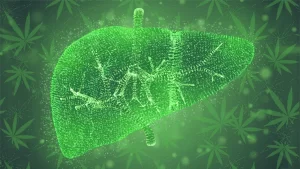|
Getting your Trinity Audio player ready...
|
A group of Chinese investigators assessed the relationship between marijuana use and the prevalence of fatty liver disease in a cohort of 2,622 US adults. Study participants consisted of current cannabis consumers, former consumers, and lifetime non-users.

Researchers determined that both current and former users possessed lower rates of liver steatosis than did those with no history of marijuana use – a finding that is consistent with numerous other studies.
Authors of the study concluded: “In this nationally representative sample, current marijuana use is inversely associated with steatosis. … Further studies are required to confirm these results longitudinally, and investigations into marijuana compounds and their biological effects are promising for treating and preventing fatty liver disease.”
The results of a 2018 meta-analysis, which reviewed nine studies involving nearly six million subjects, similarly acknowledged “a reduction in the prevalence of NAFLD (non-alcoholic fatty liver disease) in marijuana users.”
Full text of the study, “Marijuana use is inversely associated with liver steatosis detected by transient elastography in the general United States population in the NHANES 2017-2018: A cross-sectional study,” appears in PLOS One.





